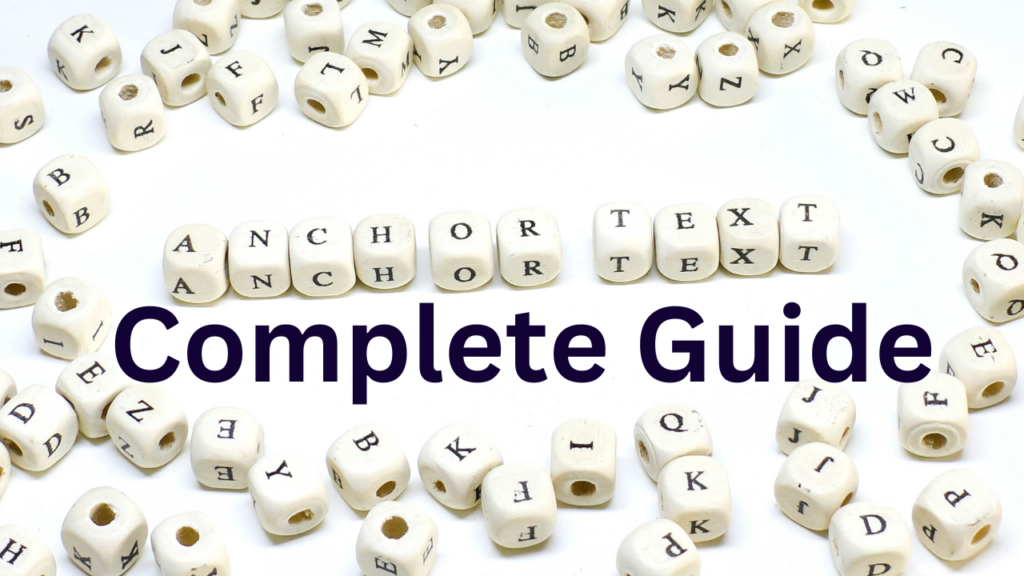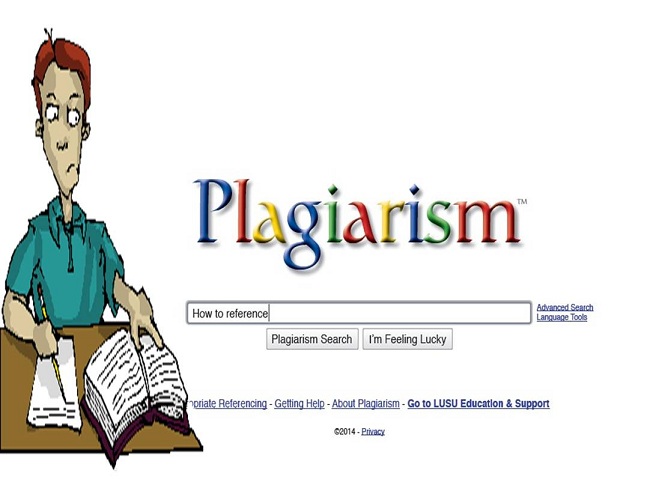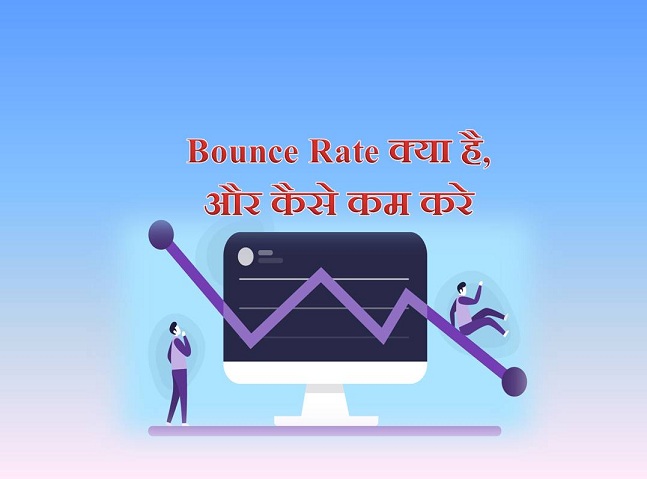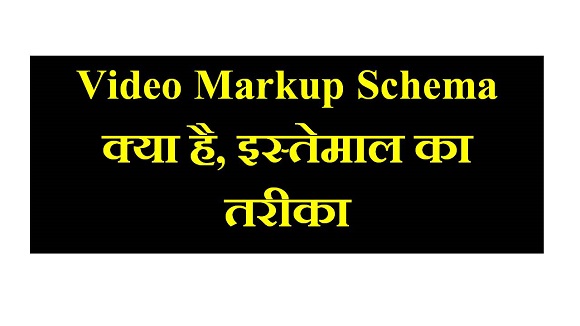What is Anchor Text and How Important Is It? Anchor Text guide for SEO
Have you ever written Anchor Text for Backlinks? Do you know what Anchor Text is? And how important is Anchor Text for Backlinks? If not, let me tell you that Anchor Text is text that is visible and clickable in a hyperlink.
About 30% to 40% of bloggers make mistakes when writing Anchor Text in their Backlinks.

In SEO, Anchor Text plays a crucial role in Link Building (Backlinks and Internal links). If Anchor Text is not used correctly in Backlinks, it may not yield positive results in the eyes of SEO. In this article, I will provide you with all the information related to Anchor Text, including what Anchor Text is and how it can improve your blog’s ranking. We will explore the direct and indirect benefits of Anchor Text and answer all these questions in this article. Therefore, this article is going to be very useful for you, so don’t miss any point.
So let’s start with what Anchor Text is.
What is Anchor Text
Anchor Text is a type of text that is visible or highlighted in a hyperlink. Clicking on it opens a new target page. Bloggers link their old posts to new ones using Anchor Text. Anchor Text is also known as link label or link text. Anchor Text is typically displayed in blue color with underlined text. You can change its color and underline in HTML coding.
Anchor Text acts as a type of keyword that provides search engines with accurate information about the topic of your web page. The words written in Anchor Text help search engines determine the ranking of the page by Google.
Links that exist without Anchor Text are referred to as “Naked Text.”
Different browsers display Anchor Text in different ways.
What are good and bad Anchor Texts?
Now that you’ve learned what Anchor Text is, let me tell you about good and bad Anchor Texts.
Incorrect Anchor Text: Phrases like “Click Here,” “Read Here,” or “More Information Here” are completely wrong to use in your blog. Nowadays, most bloggers write in this way, which provides no technical value to search engines, and it doesn’t give them accurate information about your topic. This can negatively affect your SEO ranking.
Correct Anchor Text: You should use target keywords in your Anchor Text, such as “SEO Tips” or “SEO Benefits.” Using such keywords in your Anchor Text makes your article more effective.
How can you improve the search ranking using Anchor Text?
You can improve your blog’s ranking by using Anchor Text effectively. Here’s how:
- Relevance: Ensure that the Anchor Text is relevant to the linked content. The text should accurately describe the linked page’s content. This helps search engines understand the context and relevance of the link.
- Use Keywords: Incorporate relevant keywords into your Anchor Text. These keywords should align with your content and target the search terms you want to rank for.
- Diversity: Avoid overusing the same Anchor Text repeatedly. Using a variety of Anchor Texts helps maintain a natural link profile and provides a more comprehensive understanding of your content.
- Avoid Generic Phrases: As mentioned earlier, avoid generic and non-descriptive phrases like “Click Here.” Instead, use specific and descriptive Anchor Text that tells users and search engines what they can expect when they click the link.
- Natural Linking: Ensure that your Anchor Text and links appear naturally within your content. Don’t force links or over-optimize them, as this can lead to penalties from search engines.
- Internal Linking: Use Anchor Text for internal links within your website. This helps search engines crawl and understand your site’s structure and content.
- User Experience: Ultimately, focus on providing a good user experience. Anchor Text should guide users to relevant, valuable content. When users find your content helpful, they are more likely to stay on your site, reducing bounce rates, and improving your ranking.
- Monitor and Adjust: Regularly review your Anchor Text strategy and monitor your website’s performance. If you notice changes in your ranking, you may need to adjust your Anchor Text strategy accordingly.
By using Anchor Text effectively and following best practices, you can enhance your blog’s SEO and improve its ranking on search engine results pages.
How to Use Anchor Text?
The type of Anchor Text you should use depends on your specific goals and content. Here are different types of Anchor Text and when to use them:
- Exact-Match Anchor Text: This type of Anchor Text uses the exact keyword you want to rank for. Use it sparingly and only when it makes sense within the context of your content.
- Partial-Match Anchor Text: This includes a variation or part of your target keyword. It can help improve rankings while appearing more natural.
- Branded Anchor Text: Use your brand name as the Anchor Text. This helps reinforce your brand and is great for internal linking.
- Generic Anchor Text: These are generic phrases like “click here” or “read more.” Use these sparingly, and only when a specific keyword doesn’t fit naturally.
- LSI (Latent Semantic Indexing) Anchor Text: These are synonyms or related terms to your target keyword. LSI Anchor Text can add context and relevance to your content.
- Naked URLs: Use the full URL as the Anchor Text. This is common when linking to specific pages on your website or citing sources.
- Image-Based Anchor Text: If you use an image as a link, the alt text of the image serves as the Anchor Text. Make sure the alt text is relevant and descriptive.
- Long-Tail Anchor Text: Use longer, more specific phrases as your Anchor Text, often in the form of questions or complete sentences. Long-tail Anchor Text can capture highly targeted traffic.
- Emotional Anchor Text: Use emotional words or phrases to evoke a response. This type can be effective for calls to action.
When choosing the type of Anchor Text to use, consider the context and purpose of the link. It’s essential to maintain a natural and user-friendly experience while optimizing your content for search engines. Diversify your Anchor Text to avoid over-optimization, and ensure that it accurately represents the linked content. Your Anchor Text strategy should align with your overall SEO strategy and goals.
What is Excessive Anchor Text?
Excessive Anchor Text, also known as “over-optimization,” refers to the practice of using too many optimized Anchor Text links in your content or on your website. This can lead to an unnatural linking profile and potentially harm your SEO efforts. Here are some key points to understand about excessive Anchor Text:
- Keyword Stuffing: Excessive use of exact-match or partial-match keywords in Anchor Text can come across as spammy to search engines. It can be seen as an attempt to manipulate search rankings.
- Dilution of Link Equity: When you use the same keywords in Anchor Text for multiple links, it can dilute the link equity (SEO value) passed to the linked page. This is because search engines may perceive it as an attempt to inflate the importance of the linked page.
- Penalization: Over-optimizing Anchor Text can lead to potential ranking penalties by search engines like Google. They may penalize your website for violating their guidelines on natural linking practices.
- User Experience: Excessive use of optimized Anchor Text can disrupt the user experience and make your content seem less natural and engaging to readers.
To avoid excessive Anchor Text, it’s essential to maintain a diverse and natural linking profile. Use a variety of Anchor Text types, including branded, generic, and long-tail Anchor Text, and ensure that links serve the purpose of providing valuable information to users. Balancing your Anchor Text strategy is crucial for effective SEO and a positive user experience.
What is Exact Match Anchor Text?
“Exact Match Anchor Text” is the anchor text that uses the same words as the primary topic of the landing page it links to. The purpose of this anchor text is to tell search engines that it is relevant to the content and acts as a keyword for the linked page.
For example, if you have a topic like “Best Smartphone Recommendations,” and you use “Best Smartphones” as the anchor text for your article, it would be an Exact Match Anchor Text.
Exact Match Anchor Text is used for SEO purposes to promote the specificity of the content through relevant keywords. However, it should be used cautiously and in moderation during SEO practices because excessive use can be seen as manipulative and give the wrong signals to search engines.
What is Anchor Text Variation?
Anchor Text Variation refers to the practice of using different types of anchor text when creating backlinks to a website or webpage. Instead of using the same anchor text for every link, website owners and SEO professionals use a variety of anchor texts to make their backlink profile appear more natural and diverse. This helps in SEO by indicating that the links are not artificially generated and are more likely to provide valuable information to users.
Anchor Text Variation can include using different keywords, phrases, and even generic text like “click here” or “learn more” as anchor text. By diversifying anchor text, website owners can avoid over-optimization and reduce the risk of search engine penalties for manipulating search results. It also helps in providing a better user experience as it offers a more organic and relevant linking structure.
What is Targeted Anchor Text?
Targeted Anchor Text, in the context of SEO and backlinking, refers to using specific keywords or phrases in the anchor text of hyperlinks that point to a particular webpage. The goal of using targeted anchor text is to indicate to search engines the relevance of the linked page for those specific keywords. This practice is a fundamental part of on-page and off-page SEO strategies, as it can help improve a webpage’s search engine rankings for the chosen keywords.
For example, if you want to improve the search ranking of a webpage about “digital marketing strategies,” you may create backlinks from other websites with anchor text like “best digital marketing strategies,” “effective digital marketing techniques,” or similar keyword variations. These specific keywords are the target, and the anchor text used in the backlinks signals the page’s relevance to those terms.
However, it’s important to use targeted anchor text naturally and not engage in over-optimization or keyword stuffing, as search engines value relevance and user experience. Balancing a variety of anchor text types, including branded, generic, and exact match, is typically a good SEO practice.
What is Backlink Anchor Text?
Backlink anchor text, also known simply as anchor text, refers to the clickable text within a hyperlink that leads to another webpage. It is an essential element in the world of SEO (Search Engine Optimization) and plays a significant role in how search engines understand the content and relevance of the linked page. Backlink anchor text provides context and helps search engines determine the topic or keywords associated with the linked content.
The anchor text can vary in nature, ranging from exact match keywords to more generic phrases or even branded terms. The choice of anchor text for a backlink is a strategic decision made by the website owner or content creator to optimize the linked page for specific keywords or to enhance its visibility in search engine results.
For example, if you have a webpage discussing “healthy eating tips” and another website links to it using the anchor text “best tips for a healthy diet,” the anchor text “best tips for a healthy diet” conveys the topic or keywords associated with your content.
In summary, backlink anchor text is the visible and clickable part of a hyperlink, and it can significantly impact a webpage’s search engine rankings and its visibility in search results when chosen strategically and relevantly.
What is Natural Anchor Text vs Unnatural Anchor Text?
Natural Anchor Text:
- Natural anchor text is the use of descriptive, contextually relevant text within a hyperlink that naturally flows with the content.
- It accurately represents the linked page’s content or topic.
- It is reader-friendly and provides users with a clear idea of what to expect when they click the link.
- Search engines tend to favor natural anchor text, as it indicates that the link is genuinely relevant and not manipulated.
Examples of natural anchor text:
- “Learn more about digital marketing strategies.”
- “Visit our website for healthy recipe ideas.”
- “This study on climate change offers valuable insights.”
Unnatural Anchor Text:
- Unnatural anchor text occurs when keywords are over-optimized, leading to a forced or manipulative linking pattern.
- It may include keyword stuffing, irrelevant text, or other tactics aimed at manipulating search engine rankings.
- Search engines, particularly Google, consider unnatural anchor text to be a violation of their guidelines and may penalize websites using it.
Examples of unnatural anchor text:
- “Best SEO services, cheap SEO services, affordable SEO services” (keyword stuffing).
- “Click here now!!!” (irrelevant and spammy).
- “Google ranking tips – buy cheap watches online – increase web traffic” (over-optimized and includes unrelated keywords).
In summary, natural anchor text is organically integrated into content and provides valuable information to readers and search engines. Unnatural anchor text is typically used to manipulate search rankings and is discouraged by search engines, as it can lead to penalties and a loss of credibility. Website owners and SEO professionals are advised to use anchor text that enhances the user experience and maintains the integrity of their content.
How to create Anchor text in wordpress
Creating anchor text in WordPress is a straightforward process. You can easily add anchor text links within your posts, pages, or widgets using the WordPress visual editor. Here are the steps to create anchor text:
- Log in to your WordPress dashboard.
- Edit or create the post or page where you want to add the anchor text.
- Highlight the text that you want to turn into anchor text. This is the text that users will click on to access the linked page.
- Click the “Insert/edit link” button in the WordPress visual editor. It usually looks like a chain link icon. This button allows you to add the URL that the anchor text will link to.
- In the pop-up dialog box that appears, you can enter the URL you want the anchor text to link to in the “URL” or “Web address” field.
- Add the title for the link in the “Title” field (optional).
- Click the “Add Link” or “Insert” button to create the anchor text link.
- Save or update your post or page.
The highlighted text will now be a clickable anchor text link leading to the specified URL. You can also edit or remove the anchor text link by selecting it and clicking the “Edit” or “Remove” link in the visual editor.
Remember to use anchor text that is relevant to the linked content and provides value to your readers. Overusing keywords in anchor text or creating unnatural links can negatively affect your SEO, so it’s essential to use anchor text responsibly.
Anchor Text Linking Benefits –
- mproved User Experience: Anchor text helps users navigate your content more effectively by providing clear, clickable links. This enhances the user experience, making it easier for readers to find relevant information or resources.
- SEO Optimization: Properly optimized anchor text can improve your website’s search engine rankings. It helps search engines understand the content of the linked page and the relevance of the link, which can positively impact your SEO efforts.
- Content Organization: Anchor text allows you to organize your content and create a logical hierarchy of information. It guides readers to related articles, pages, or resources on your website, improving content accessibility.
- Increased Page Views: By using anchor text to link to other pages within your website, you can encourage readers to explore more of your content. This can lead to increased page views and a longer time spent on your site.
- Encourages Engagement: Relevant and well-placed anchor text can prompt readers to engage with your content more actively by clicking on links to learn more or access additional resources.
- Enhanced Credibility: Effective anchor text adds credibility to your content. When you provide well-structured links to reputable sources, readers are more likely to trust your content.
- Boosts SEO Ranking: Anchor text helps search engines understand the context of your links. If you use descriptive anchor text that accurately reflects the linked content, it can positively impact your website’s ranking in search engine results.
- Backlink Building: When other websites link to your content using anchor text, it can generate valuable backlinks. These backlinks can contribute to your website’s authority and visibility in search results.
It’s important to use anchor text strategically and responsibly. Avoid over-optimization or excessive use of keywords, as this can lead to search engine penalties. The primary focus should be on providing valuable information to your readers while maintaining a natural and user-friendly experience.
Other links –


![Google Discover क्या है कैसे कार्य करता हैं? Google Discover [Feed] In Hindi](https://www.deepawaliseotips.com/wp-content/uploads/2020/03/Google-Discover-in-Hindi.jpg)

सर आर्टिकल बहुत अच्छा लगा है, मैने युट्यूब विडोओ देखने के बाद लगा एक बार आर्टिकल भी देख लू, कैसा है।मुझे यह देख के अच्छा लगा ठीक है सर बायgood night.